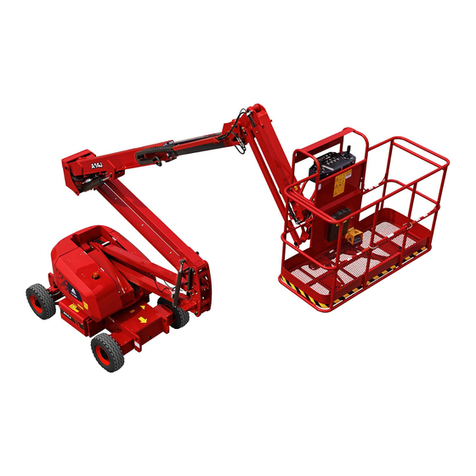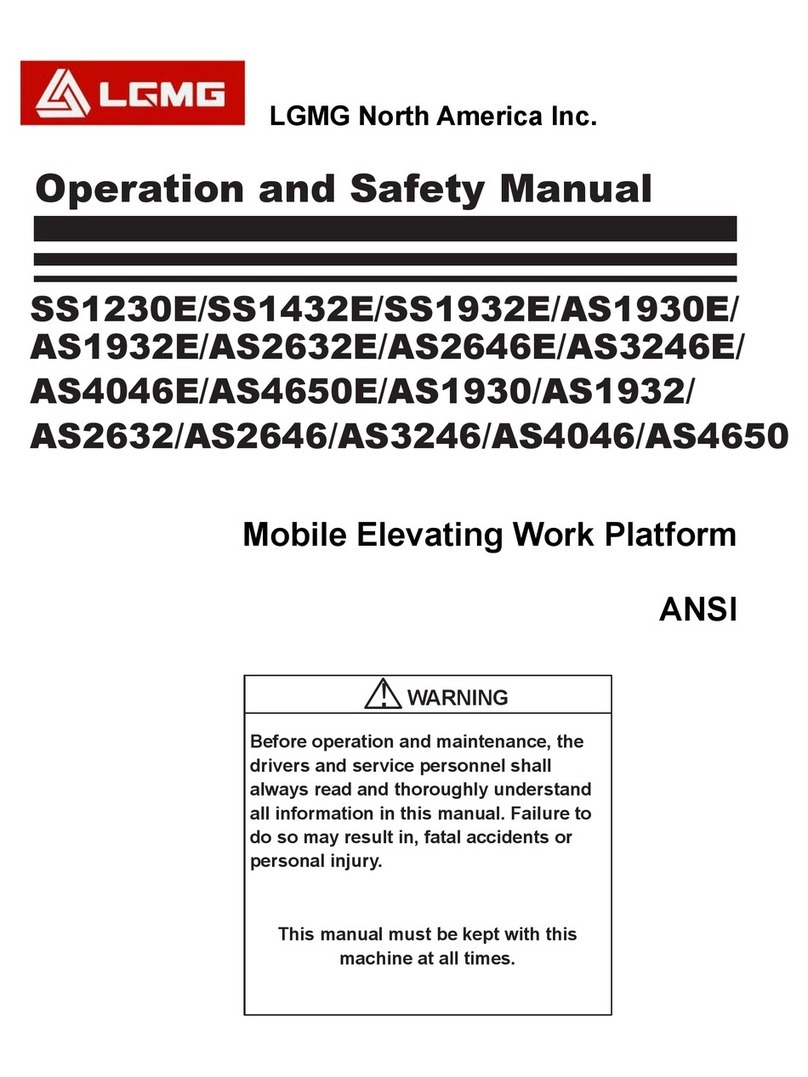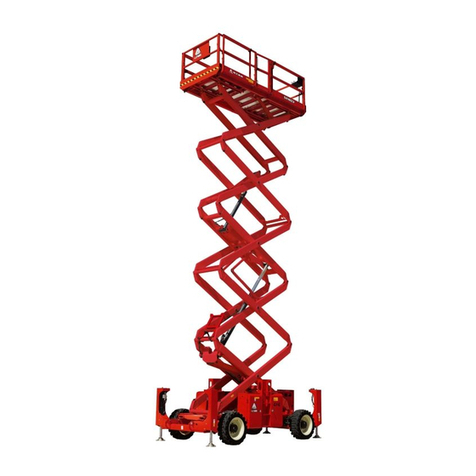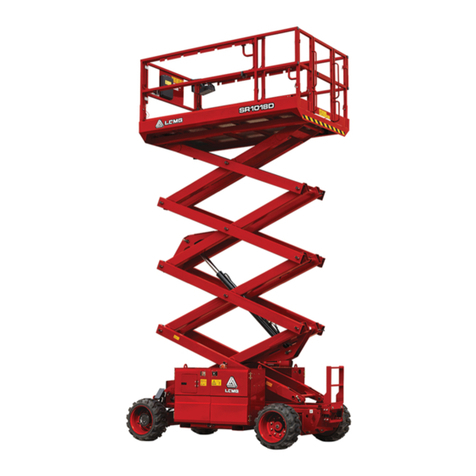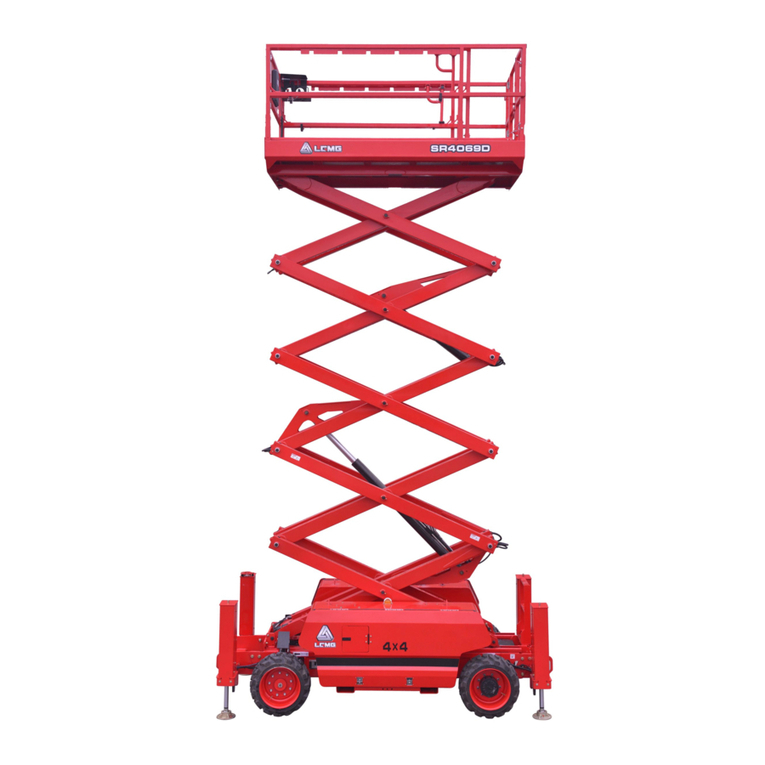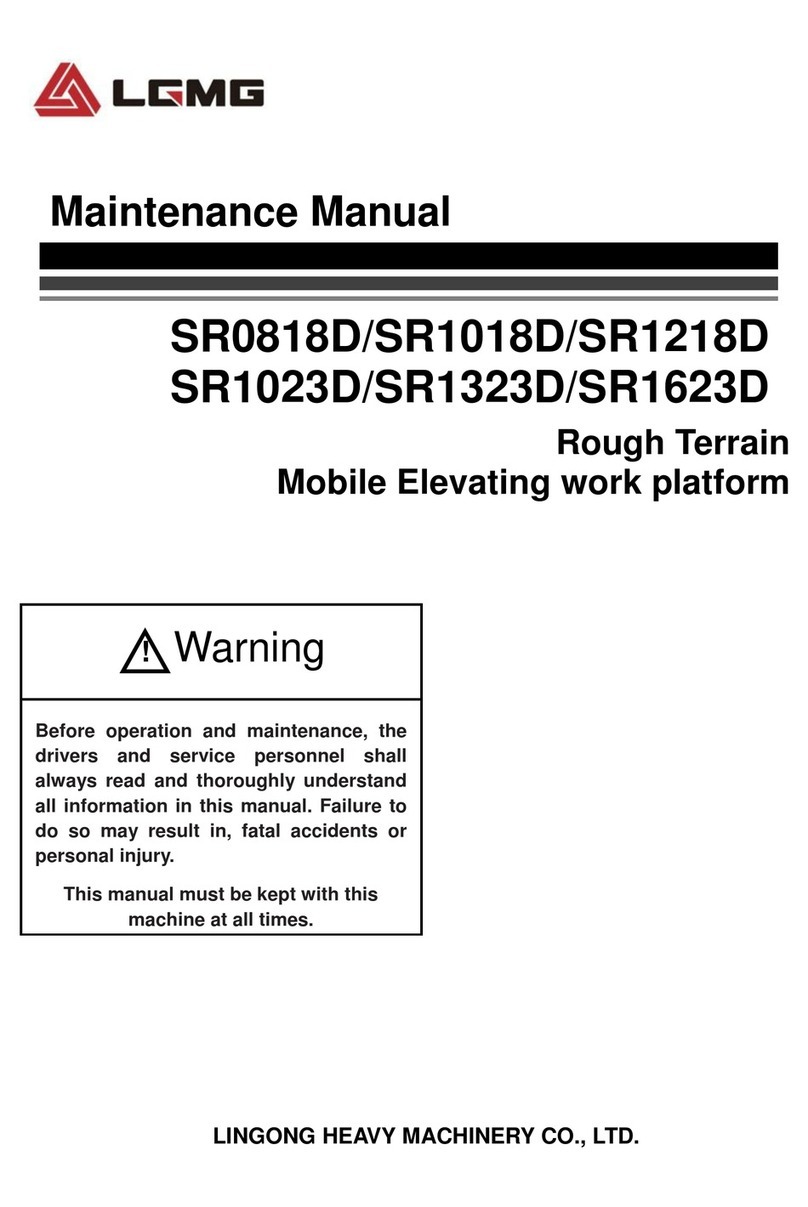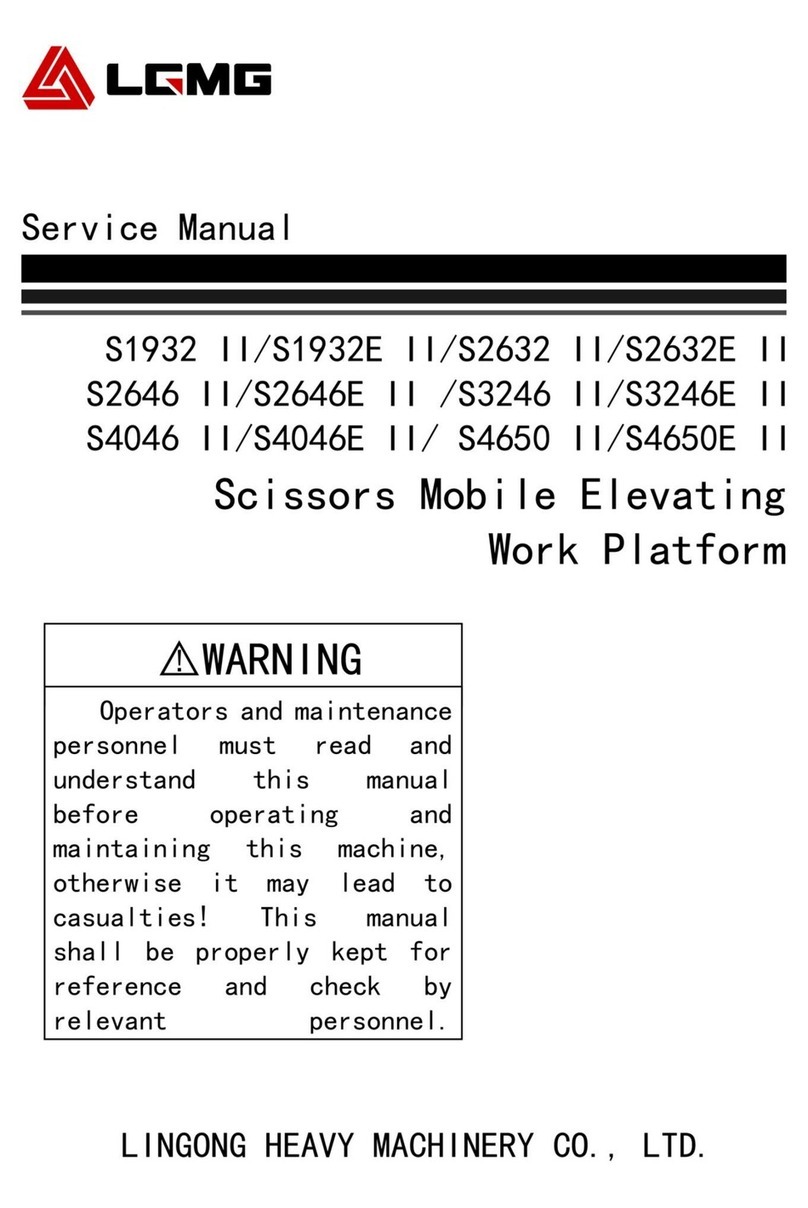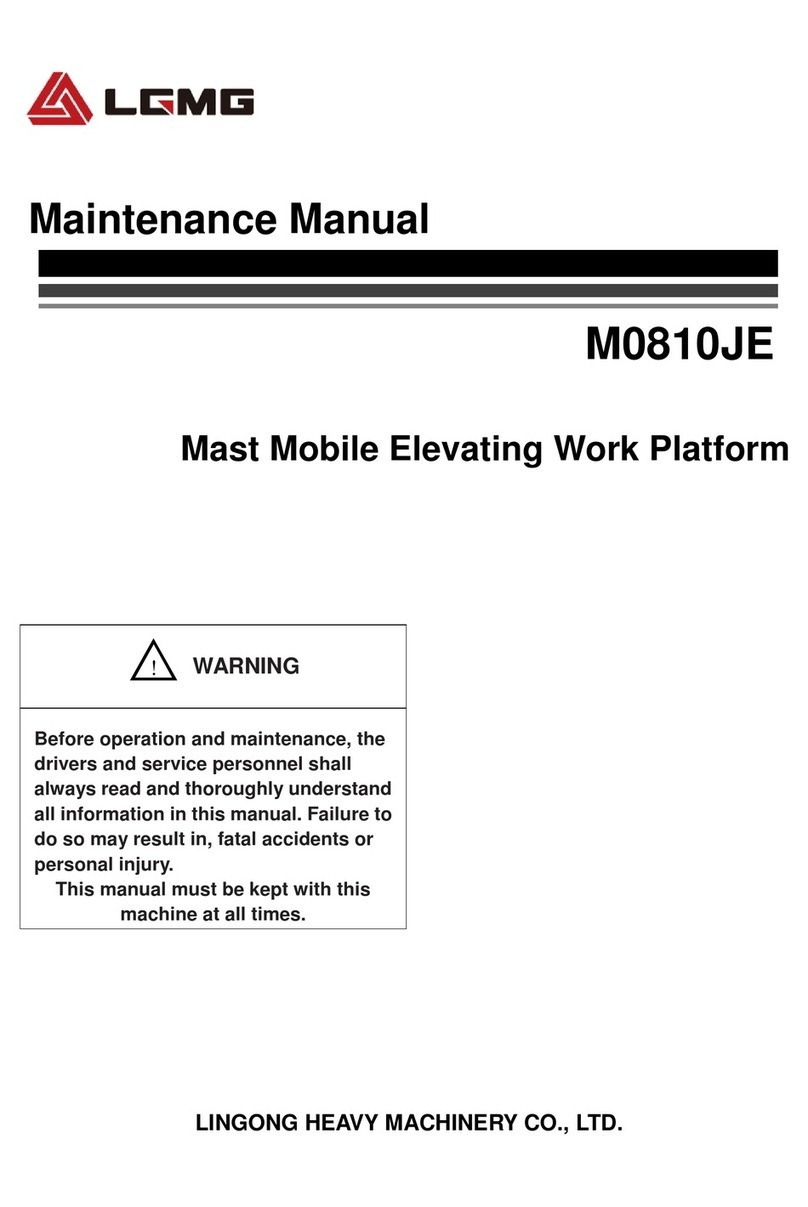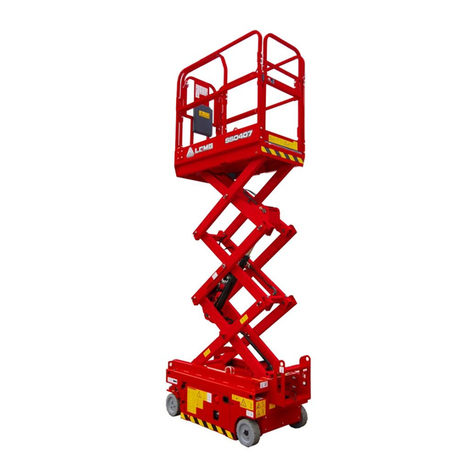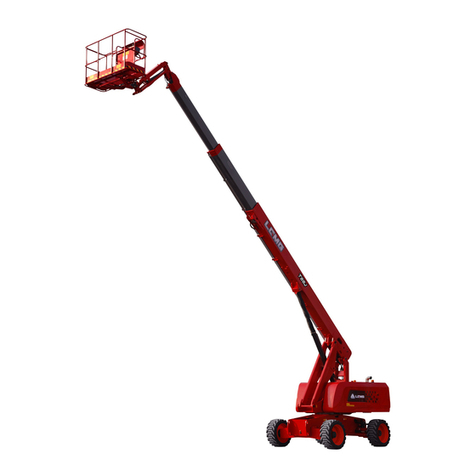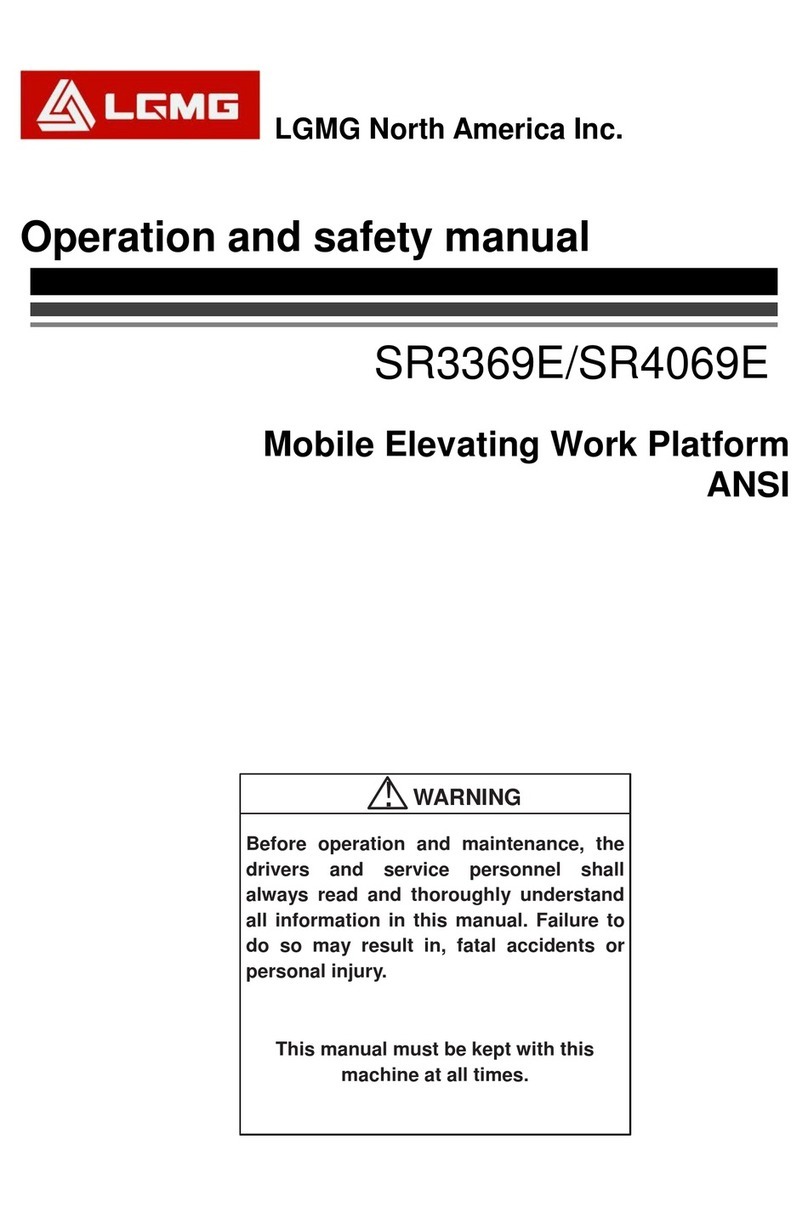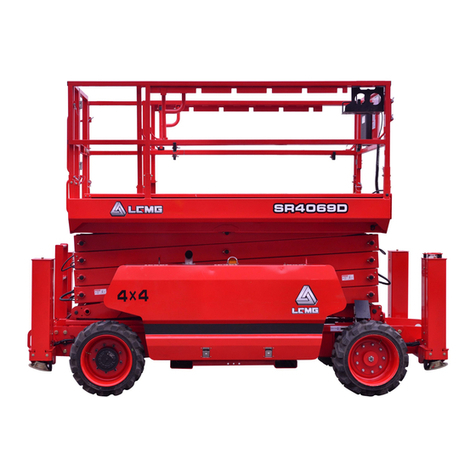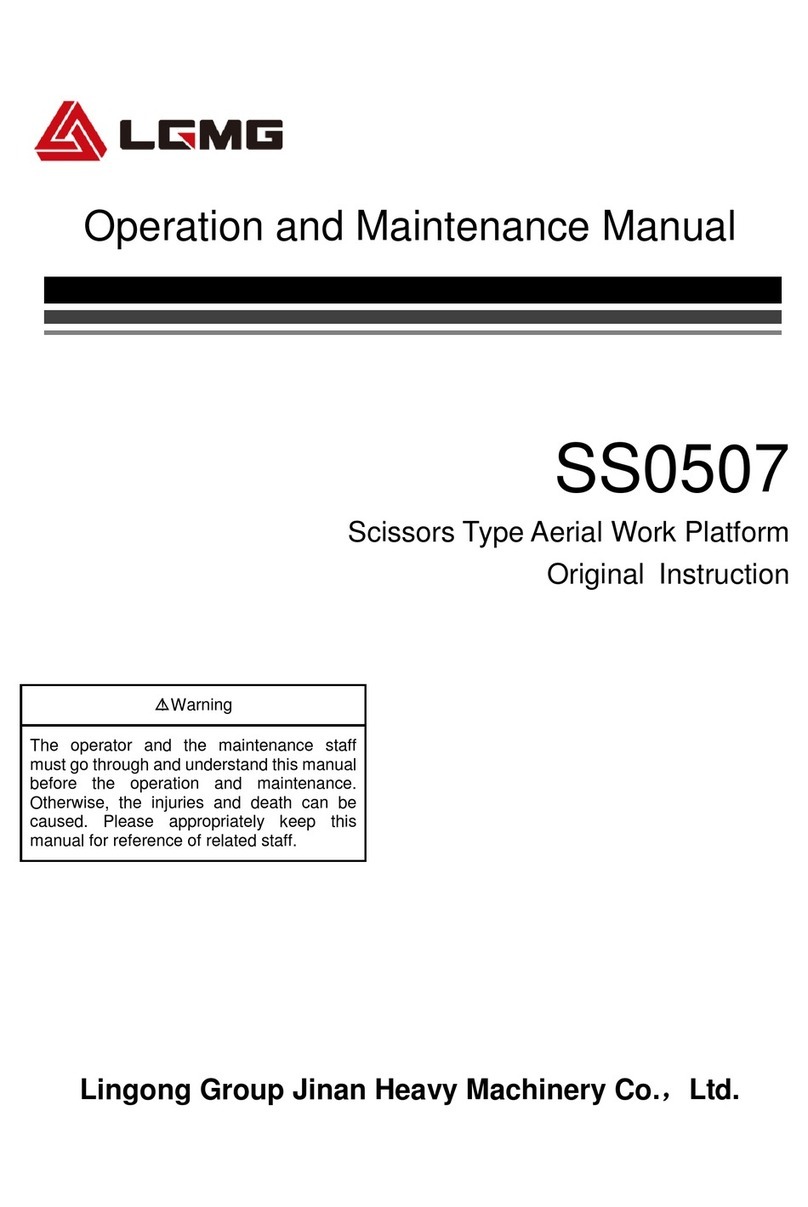
LGMG North America Inc. Maintenance Manual
3
1.1 Compliance and
Obedience
1) You are properly trained and qualified to
operate and maintain the machine safely.
2) All safety regulations in this manual,
workplace safety regulations and
applicable government laws and
regulations must be read, understood and
complied.
3) Equipped with PPE, such as helmet, seat
belt, safety shoes, goggles, protective
clothing, insulating gloves, insulating shoes,
etc., and in good physical condition.
4) When maintenance and repair procedures
are being performed, many dangers
indicated in the Operation Manual will also
become potential safety hazards.
5) Scheduled maintenance and repair can
only be completed by trained and qualified
maintenance technician.
6) Dispose of waste materials in accordance
with government regulations and workplace
regulations.
7) Only parts and consumables approved by
the LGMG can be used.
8) Always perform functional tests after
maintenance.
1.2 Checking the Safety
Manual
It is necessary for safe equipment operation to
keep the Operator and Safety Manual in good
condition. The manual shall be stored in a
container in the working platform provided by
each machine. An illegible or missing manual
will not provide the necessary safety and
operation information for safe operation.
1) Check that the storage container is on site
and in good condition.
2) Check that the Operator, Responsibility,
and Safety Manual is complete in the
storage container on the work platform.
3) Check that each page of the manual is
identifiable and in good condition.
4) Put the manual in the storage file box after
use.
△
! If you need to replace the manual,
please contact the company’s service
personnel.
1.3 Check the Labels and
Signs
It is necessary for safe operating equipment to
keep all safety and instructions labels and signs
in good conditions. Labels are used to remind
operators and staff of the possible hazards
when operating this equipment. User operation
and maintenance information is also provided.
An illegible label does not remind the staff of
steps or hazards, and may also result in unsafe
operating conditions.
Refer to the label section in this manual and use
the label menu and instructions to check
whether all labels are in place.
Check all the labels for clarity and damage and
immediately replace any damaged or illegible
ones.
△
! If you want to replace the label,
please contact the company’s service
personnel.
1.4 Every Day or every 8
Hours
1.4.1 Check for Damaged, Loose
or Missing Parts
This step is performed every 8 hours or every
day, whichever comes first.
Carrying out daily equipment status check is
necessary for ensuring safe equipment
operation and maintaining good equipment
performance. Incorrect positioning, repairing
damaged equipment, and loose or missing parts
may result in unsafe operating conditions.












